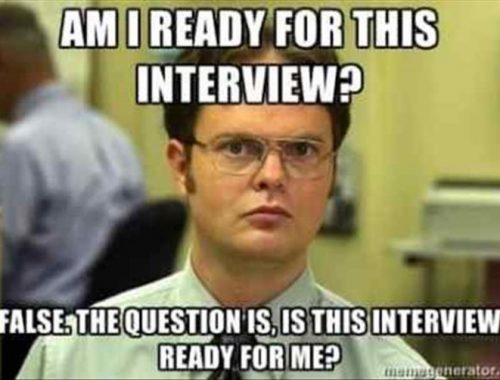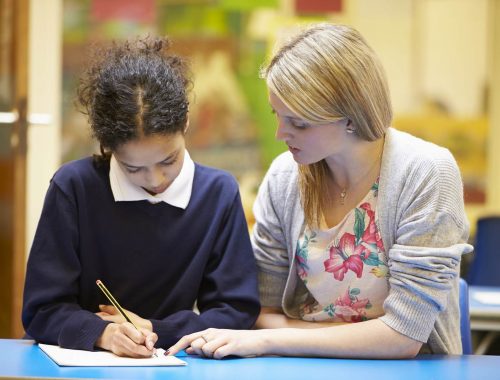Situation + Task + Action + Result… How hard can that be?

“So pure the sky, so quiet was the air!
So like, so very like, was day to day!
Whene’er I look’d, thy image still was there;
It trembled, but it never pass’d away.” – William Wordsworth
Naturally, I am composed of feelings that range from passion to doubt and like Wordsworth, I often struggle with aspiration as it is becomes flooded with anxiety. As part of my Work-Based Learning module I have been challenged to develop an insightful understanding of where my feelings guide me in interest of my future career. And alas, with the gift of the simulated interview presented upon me by the Work-Based Learning module, I tackle the pervasive feeling of doubt during the interview. In this blog, I will demonstrate how I tackled such anxiety using Gibbs’ Reflective Cycle and as a method, I will further outline the ‘STAR’ technique to enable a well-presented, anxiety-free interview.
Gibbs’ Reflective Cycle

Given that I had to complete the interview within a limited amount of time, I had to calculate the best way to adjust each answer so that it was presented smoothly. With this, I decided to use the ‘STAR’ technique as it allowed me to produce a set structure and time estimate for each answer in response to the potential questions that I could have been asked. The format of the ‘STAR’ technique is as follows…
S – Situation (Describe the situation)
T – Task/ Target (Describe the task and the desired target that you wished to achieve)
A – Action (Describe the action that you responded with and why you did it)
R – Result (What was the end result?)
Naturally, I tend to grow nervous when I am faced with interviews which in turn, causes me to forget important details that would have further strengthened my image. However, after discovering the ‘STAR’ technique, it allowed me to produce well-instructed answers by using the four categories which further prevented any disruption by nerves that could lessen the quality of the answer.
For the simulated interview, I chose to ‘apply’ for the role of a Learning Resources Librarian (Reading Lists), as this job description appealed to me the most, as I would like to pursue in a career that is motivated by education. During the interview, I was asked four questions that were adapted to suit my chosen job description and these questions were asked by a selected number of classmates. The questions were divided into four different categories as follows…
Autobiographical
Competency-based
Strength-based
Technical
Knowing the four different categories allowed me to prepare in advance so that I had a general idea of what my potential answers could have included in response to the different types of questions, which further reduced my anxiety.
When I was answering the questions, I was constantly reminding myself of a study that I had read by Cheek, J. M, & Buss, A. H, in which they elaborate on the concept of anxiety and how it is presented during an interview…
“The most marked symptom of those who are socially anxious is a lack of eye contact,”
(Cheek, J. M, & Buss, A. H, 1994)
In addition, I also considered Cook and Pilkonis’ two studies where they address that anxiety in an interview causes a lot of “self-manipulation” behaviours which becomes evident in an excess of physical touch to the interviewees face, body, and hair which in consequence causes a disruption to speech. (Cook 1969, & Pilkonis 1977). With these in mind, I was consistent in keeping eye contact and as a method to prevent any obvious fidgeting to my hair, face, and body, I focused on my breathing and hand placement.
After the simulated interview, the classmates who interviewed me were required to fill out a feedback form where they had to include my strengths and weaknesses from the interview. In the form, they commented on my use of the ‘STAR’ technique claiming that it was strong and evident however, they highlighted that in question three which was a competence-based question, that I had failed to provide a ‘result’ to my answer which is a significant element to the type of question asked. Due to this, my failure to address the ‘result’ negatively impacted my final scoring however, this feedback is very useful to me as I can now reflect on that specific answer and readjust my response for future reference. Constructive criticism is important when reflecting on mistakes and this is evaluated by John Hattie and Helen Timperley…
“Feedback is one of the most powerful influences on learning and achievement, but this impact can be either positive or negative,”
(Hattie & Timperley, 2007)
In conclusion, the simulated interview has allowed me to identify my strengths while also helping me realise the areas in which I would need further improvement on (which in this case is my use of the ‘STAR’ technique). With Gibbs’ Reflective Cycle, and the ‘STAR’ technique for structuring my answers, I am motivated to take this new knowledge of emotive control and apply it to my future journey in successfully securing a career in education.
https://blogs.qub.ac.uk/ael3001-2022/2023/02/20/situation-task-action-result-how-hard-can-that-be/.
Bibliography
Cheek, J. M, & Buss, A. H. (1994). ‘Shyness and Sociability’. Journal of Personality and Social Psychology, 41, 330–339. Online edition. Available at: https://openlibrary.org/works/OL18998318W/The_Impulsive_client?edition=key%3A/books/OL1403822M (Accessed: 20 February 2023).
Cook, M. (1969). Anxiety, speech disturbances, and speech rate. British Journal of Social and Clinical Psychology, 8, 13–21. Online edition. Available at: https://search.ebscohost.com/login.aspx?direct=true&db=cat02616a&AN=qub.b12199059&site=eds-live&scope=site. (Accessed: 20 February 2023).
Gibbs, G. (2013). Learning by Doing: A Guide to Teaching and Learning Methods. Online edition. Oxford Centre for Staff and Learning Development. Available at: https://search.ebscohost.com/login.aspx?direct=true&db=cat02616a&AN=qub.b22791772&site=eds-live&scope=site (Accessed: 20 February 2023).
Hattie, J, & Timperley, H. (2007). ‘The Power of Feedback’. Review of Educational Research, vol. 77, no. 1, 2007, 81–112. JSTOR, http://www.jstor.org/stable/4624888. (Accessed 20 Feb. 2023).
Pilkonis, P. A. (1977). The behavioural consequences of shyness. Journal of Personality, 55, 596–611. https://search.ebscohost.com/login.aspx?direct=true&db=cat02616a&AN=qub.b12083781&site=eds-live&scope=site (Accessed: 20 February 2023).
Wordsworth, W. ‘Elegiac Stanzas, Suggested by a Picture of Peele Castle in a Storm, Painted by Sir George Beaumont’. Romantic Poetry: An Annotated Anthology. Edited by Michael O’Neill and Charles Mahoney. Oxford: Blackwell Press (2008), 4, 170-171. Print.
Interview? Interview!
Interview simulation
You May Also Like

“Fake it ‘til you make it!”: Finding Success in a Simulated Interview
22 February 2023
Challenge Accepted Sir!
18 April 2023
